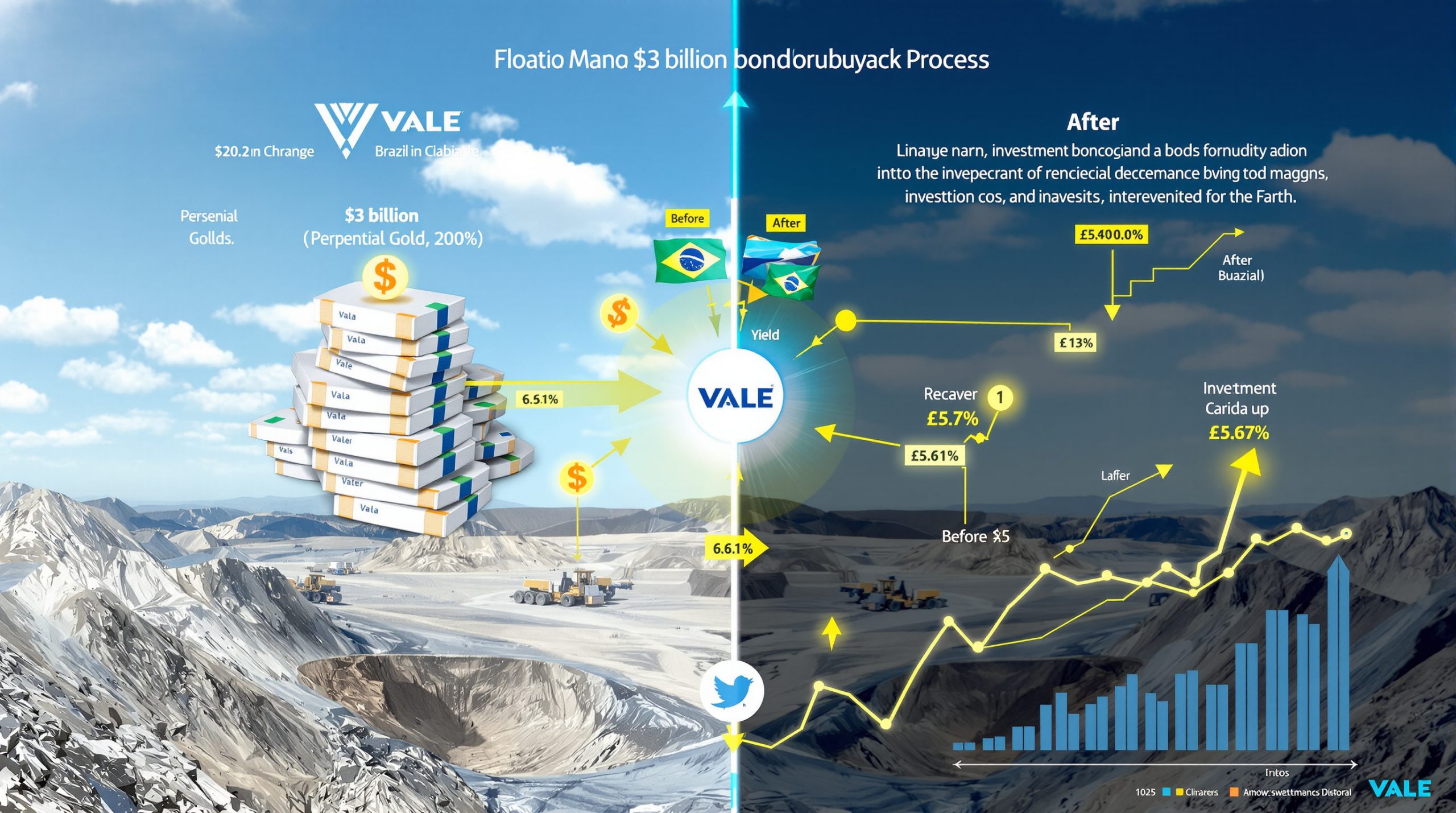What's Happening with LME Copper Inventories?
Recent Rebound After Two-Year Low
The London Metal Exchange (LME) copper stockpiles reached a nearly two-year low of approximately 105,000 metric tonnes on June 30, 2025, marking a significant drawdown period throughout early Q2. However, inventories have since rebounded considerably, climbing to 108,725 mt as of July 11, 2025—the highest level observed in nearly a month.
This recovery follows a consistent pattern of depletion that characterized much of the second quarter, with stocks falling steadily until the end-of-June low point. Market analysts note that this rebound, while modest in percentage terms, signals a potential shift in the supply-demand dynamics.
"The recent inventory accumulation at LME warehouses suggests a temporary easing of physical market tightness," explains a senior metals analyst at Shanghai Metal Market (SMM). "However, levels remain significantly below historical averages, indicating underlying structural constraints."
Historical Context of LME Copper Stocks
LME copper stocks serve as the primary global benchmark for copper inventory assessments, offering transparency in an otherwise opaque market. Despite the recent increases, current inventory levels remain historically tight compared to five-year averages.
Inventory fluctuations have demonstrated increased volatility throughout 2025, with sharp drawdowns followed by rapid replenishments. This pattern reflects the complex interplay between mine production issues, logistics challenges, and regional demand shifts.
It's worth noting that exchange stocks represent only a fraction of global copper supply—approximately 15-20% of total world stocks according to industry estimates. The remainder exists as producer inventories, consumer stocks, and in-transit material, largely invisible to market participants.
How Are SHFE Copper Inventories Performing?
Recent Slight Decrease in Chinese Exchange Stocks
Shanghai Futures Exchange (SHFE) copper inventories decreased by 3.7% during the week ending July 11, 2025, falling to 81,462 metric tonnes. This reduction positions SHFE stocks at their lowest level in nearly two months, highlighting continued tightness in the Chinese domestic market.
The decline in SHFE warehoused material stands in contrast to the accumulation observed in other global exchanges, particularly the LME. This divergence suggests region-specific demand patterns may be at play, with Chinese domestic consumption potentially outpacing near-term supply.
Manufacturing data indicates continued strength in China's electrification programs and infrastructure development, which may be drawing down available exchange stocks despite broader global economic uncertainty.
International Copper Inventory Movement
While domestic SHFE stocks declined, international copper inventories (referring to SHFE's international copper contract stocks) increased substantially, rising by 3,711 mt to reach 15,679 mt. This represents a significant percentage increase of nearly 31% in offshore Chinese stocks.
The divergence between domestic and international inventory trends suggests shifting trade flows, with material potentially being redirected from domestic to international warehouses in response to premium differentials.
This redistribution highlights the increasingly complex nature of global copper trade, where arbitrage opportunities drive physical metal movements across regions and between various exchange warehouses.
What's Happening with COMEX Copper Inventories?
Multi-Year Highs in American Exchange Stocks
COMEX copper inventories continued their remarkable accumulation trend last week, reaching 234,204 metric tonnes—the highest level in over seven years. This sustained build in North American warehouse stocks has been one of the most consistent trends in global copper markets throughout 2025.
The persistent increase in COMEX inventories stands in stark contrast to the relatively tight conditions observed in other regions, particularly at the LME and SHFE. This regional disparity reflects fundamental differences in regional supply-demand balances.
Several factors contribute to this phenomenon, including robust North American production, logistics bottlenecks limiting exports, and relatively softer regional demand compared to other major consuming regions.
Regional Disparities in Global Copper Stockpiles
COMEX inventories now significantly exceed the combined stocks of both LME and SHFE warehouses. With COMEX holding 234,204 mt versus the combined 190,187 mt at LME and SHFE, the regional imbalance has reached historically unusual proportions.
North American warehouse stocks have grown steadily throughout 2025, reflecting regional surplus conditions. Meanwhile, Asian and European markets continue to experience relative tightness, creating opportunities for traders to exploit regional premium differentials.
"The extreme regional inventory imbalance we're witnessing is unprecedented in recent copper market history," notes a veteran metals trader. "COMEX stocks alone now account for over 55% of visible global exchange inventories, compared to a historical average of around 30-35%."
These shifting global trade patterns have significantly influenced premium structures across regions, with U.S. Midwest premiums trading at unusual discounts to European and Asian equivalents.
How Do Current Inventory Trends Impact Copper Prices?
Market Implications of Inventory Movements
As SMM analysts note, "A continuous decline in inventories at domestic and overseas exchanges will support futures prices, while the opposite will have a bearish impact on futures prices." This fundamental relationship underpins much of copper price action.
The current mixed inventory picture—with accumulation at COMEX and LME but declines at SHFE—creates conflicting signals for price direction. However, the overall low absolute inventory levels relative to global consumption continue to maintain underlying price support.
When measured against global consumption of approximately 25 million tonnes annually, the total visible exchange inventories of 424,391 mt represent just over 5 days of global demand—a historically tight level despite recent increases in certain regions.
Technical Market Analysis
Visible exchange inventories represent only a portion of global copper stocks, with significant volumes held in private warehouses, at producers, or in the supply chain. This limited visibility makes price reactions to exchange inventory movements sometimes counterintuitive.
Days of consumption coverage remains historically tight compared to long-term averages, supporting underlying price fundamentals despite regional surpluses. The 10-year average for visible inventory coverage stands at approximately 7.1 days, compared to current levels near 5.2 days.
Interestingly, inventory-to-price correlations have weakened in recent quarters as financial factors, including macroeconomic trends, interest rate policies, and trade war copper impact, have exerted greater influence on copper pricing.
Regional premiums have become increasingly important price indicators, with physical premiums often providing clearer signals about immediate supply-demand balances than futures prices alone.
What's Behind the Divergent Inventory Trends?
Supply-Side Factors Influencing Copper Stocks
Production disruptions at major mines have significantly affected global supply chains throughout 2025. Notable disruptions include the continued closure of Cobre Panama, maintenance at Chile's Escondida, and weather-related issues affecting Australian operations.
Smelter maintenance schedules have impacted refined copper availability in key regions, with Chinese smelters operating at reduced capacity during the second quarter due to scheduled maintenance and environmental inspections.
Logistical constraints continue to affect the movement of material between regions. Red Sea shipping disruptions have added approximately 15 days to typical delivery times for metal moving from Africa to Asian markets, creating regional supply imbalances.
New production capacity is gradually entering the market in select regions, with the commissioning of projects in the Democratic Republic of Congo and Indonesia adding modest volumes to global supply. However, these additions have been largely offset by disruptions elsewhere.
Demand-Side Influences on Copper Inventories
Regional economic performance differences have significantly affected consumption patterns. The latest manufacturing PMI data shows a clear divergence, with U.S. readings at 52.1 indicating expansion, while China (49.8) and Europe (47.3) remain in contractionary territory.
Energy transition investments continue driving copper demand despite broader economic uncertainty. Electric vehicle production, renewable energy installations, and grid infrastructure upgrades maintain steady consumption growth, albeit at a somewhat slower pace than forecasted earlier.
Construction sector activity varies significantly by region, with Chinese property market weakness contrasting with resilient U.S. infrastructure spending. This regional demand divergence helps explain the inventory imbalances observed across exchanges.
Manufacturing PMI indicators show these divergent trends across major economies, with downstream fabricators adjusting inventory policies according to regional outlook expectations.
What's the Outlook for Copper Inventories?
Projected Inventory Trends for Q3 2025
Seasonal factors typically influence inventory patterns in late summer, with August traditionally seeing reduced consumption in many regions due to manufacturing shutdowns and construction slowdowns. This could temporarily boost visible stocks.
Chinese demand patterns may shift following recent policy adjustments aimed at stimulating infrastructure investment. The State Council's June 2025 announcement of additional funding for grid upgrades could accelerate inventory drawdowns in the region.
Production recovery at key mines is anticipated to increase available supply by late Q3. Several major operations that experienced disruptions earlier in the year are expected to return to full capacity by September, potentially easing physical market tightness.
Arbitrage opportunities will continue to drive inter-regional movements, with premiums likely to normalize as logistical constraints ease and regional imbalances gradually correct through market mechanisms.
Long-Term Inventory Considerations
Structural deficits are projected to persist in the copper market according to industry forecasts. The International Copper Association projects a cumulative deficit of 8.4 million tonnes by 2030 as energy transition demand outpaces mine supply growth.
New mining projects face increasingly lengthy development timelines, with average times from discovery to production now exceeding 15 years. This extension of development horizons creates significant challenges for supply growth in the medium term.
Secondary supply (recycling) is becoming more significant to overall balance, with recycled material now accounting for approximately 30% of global copper supply. Improvements in collection and processing technologies could further enhance this contribution.
Strategic stockpiling activities add another dimension to inventory analysis, with several nations, including China through its State Reserve Bureau, periodically adjusting strategic metal reserves in response to market conditions and national security considerations.
FAQ About Copper Inventories
What is the significance of exchange inventories versus off-exchange stocks?
Exchange inventories represent copper that meets specific quality standards and is available for immediate delivery. However, they represent only a fraction of total global copper stocks, which include producer, consumer, and merchant inventories not visible to the market.
Off-exchange stocks are estimated to be 4-5 times larger than visible exchange inventories but are much less transparent. These stocks include material at various stages of the supply chain, from mines and smelters to fabricators and end-users.
The relationship between visible and invisible stocks makes inventory analysis challenging, as movements between these categories can significantly impact market dynamics without being immediately apparent to participants.
How do seasonal factors affect copper inventory levels?
Copper inventories typically build during Chinese New Year and summer maintenance periods when consumption temporarily decreases. This seasonal pattern is particularly pronounced in Asia, where manufacturing shutdowns during holidays can significantly reduce short-term demand.
Conversely, inventories often decline during peak construction seasons in spring and autumn, when fabricator demand reaches annual high points. This seasonality creates predictable inventory cycles that traders and market participants factor into price expectations.
Weather-related disruptions can also influence seasonal patterns, with South American production frequently affected by heavy rainfall during December-February and North American logistics impacted by winter conditions.
Why do inventory levels sometimes move in opposite directions across different exchanges?
Regional price differentials, arbitrage opportunities, and localized supply-demand dynamics can cause inventory flows between exchanges. When premiums are high in one region, material tends to flow toward that market, reducing inventories elsewhere.
Regulatory differences and warehousing costs also influence storage decisions. COMEX warehouses have recently offered more favorable storage terms than LME facilities, contributing to the inventory build in North America despite relative tightness elsewhere.
Trader positioning and financing deals further complicate inventory movements, as metal may be moved between locations for reasons unrelated to physical demand, such as taking advantage of favorable interest rates or contango market structures.
What is the relationship between exchange inventories and copper prices?
While declining inventories traditionally support higher prices, the relationship has become more complex. Factors such as the rate of change, absolute levels, and canceled warrants (metal earmarked for withdrawal) must all be considered when analyzing price implications.
"The copper market has evolved to where exchange inventory levels provide important but incomplete price signals," explains a senior commodity strategist. "The speed of change often matters more than absolute levels, with rapid declines typically driving stronger price reactions than gradual ones."
The growing influence of financial participants in commodity markets has somewhat diluted the traditional inventory-price relationship, with macroeconomic factors and investment flows sometimes overwhelming physical market signals.
Comparative Analysis of Global Copper Exchange Inventories
| Exchange | Current Level (mt) | Weekly Change | Year-to-Date Change | Historical Context |
|---|---|---|---|---|
| LME | 108,725 | +3.3% | -11.5% | Near 1-month high after 2-year low |
| SHFE | 81,462 | -3.7% | -7.2% | Relatively low level (2-month low) |
| COMEX | 234,204 | +2.1% | +47.3% | Highest in over 7 years |
| Total | 424,391 | +1.8% | +16.4% | Dominated by COMEX growth |
Key Insight: The divergent trends across major exchanges highlight the regional nature of copper markets in 2025. While COMEX inventories have reached multi-year highs, both LME and SHFE stocks remain relatively tight, creating opportunities for regional arbitrage and affecting physical premiums.
The current inventory distribution reveals significant regional imbalances that defy historical patterns. Typically, LME warehouses have held the largest share of global exchange stocks, but COMEX now dominates with 55.2% of visible inventories—an unprecedented situation that reflects fundamental shifts in global trade flows.
These regional disparities have created unique premium structures, with European and Asian physical premiums trading at substantial premiums to North American levels. This situation incentivizes the movement of metal from COMEX to other regions, a trend that may gradually rebalance inventories if logistical constraints ease.
Key Implications for Market Participants
Traders should closely monitor not just absolute inventory levels but also the rate of change and regional distribution patterns. The unusual concentration of stocks in COMEX warehouses creates potential vulnerability to rapid shifts if arbitrage windows open.
Physical market participants face continued premium volatility as material flows adjust to market signals. Fabricators in regions with tight inventories may need to maintain higher safety stocks or secure longer-term supply agreements to mitigate availability risks.
Investors should recognize that the traditional inventory-price relationship has evolved, with financial factors often dominating short-term price movements despite underlying physical market fundamentals. For those considering copper-uranium investment, understanding inventory dynamics is crucial.
Recent copper price prediction trends suggest that despite regional imbalances, the overall tight inventory situation relative to historical norms continues to provide underlying support for prices. Implementing effective copper investment strategies requires close monitoring of these LME and SHFE copper inventories to identify potential market turning points.
Disclaimer: The information contained in this article is for informational purposes only and should not be considered investment advice. Copper market conditions can change rapidly, and all investment decisions should be made with appropriate due diligence and professional consultation.
Want to Identify the Next Major Mineral Discovery?
Discovery Alert's proprietary Discovery IQ model provides instant notifications on significant ASX mineral discoveries, helping you gain a market-leading edge with real-time insights into trading and investment opportunities. Explore why major mineral discoveries can lead to exceptional returns by visiting Discovery Alert's dedicated discoveries page.




